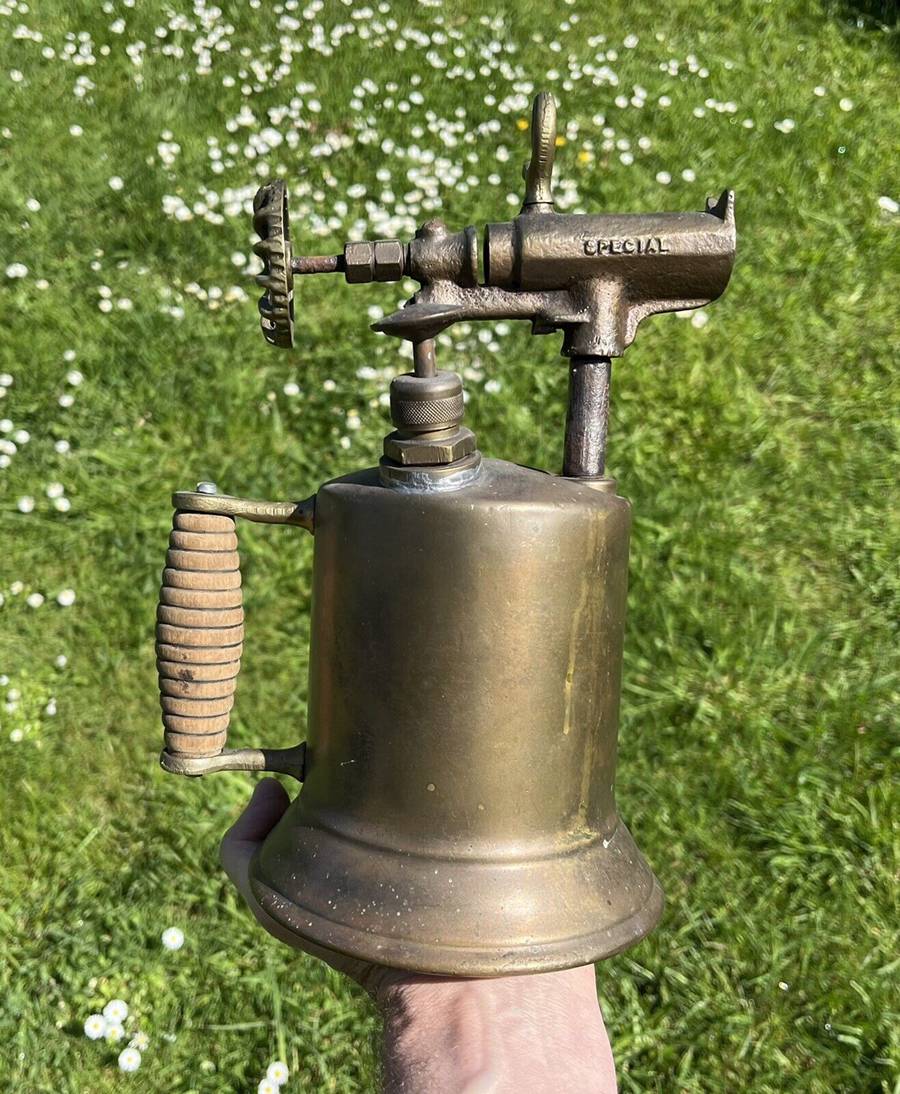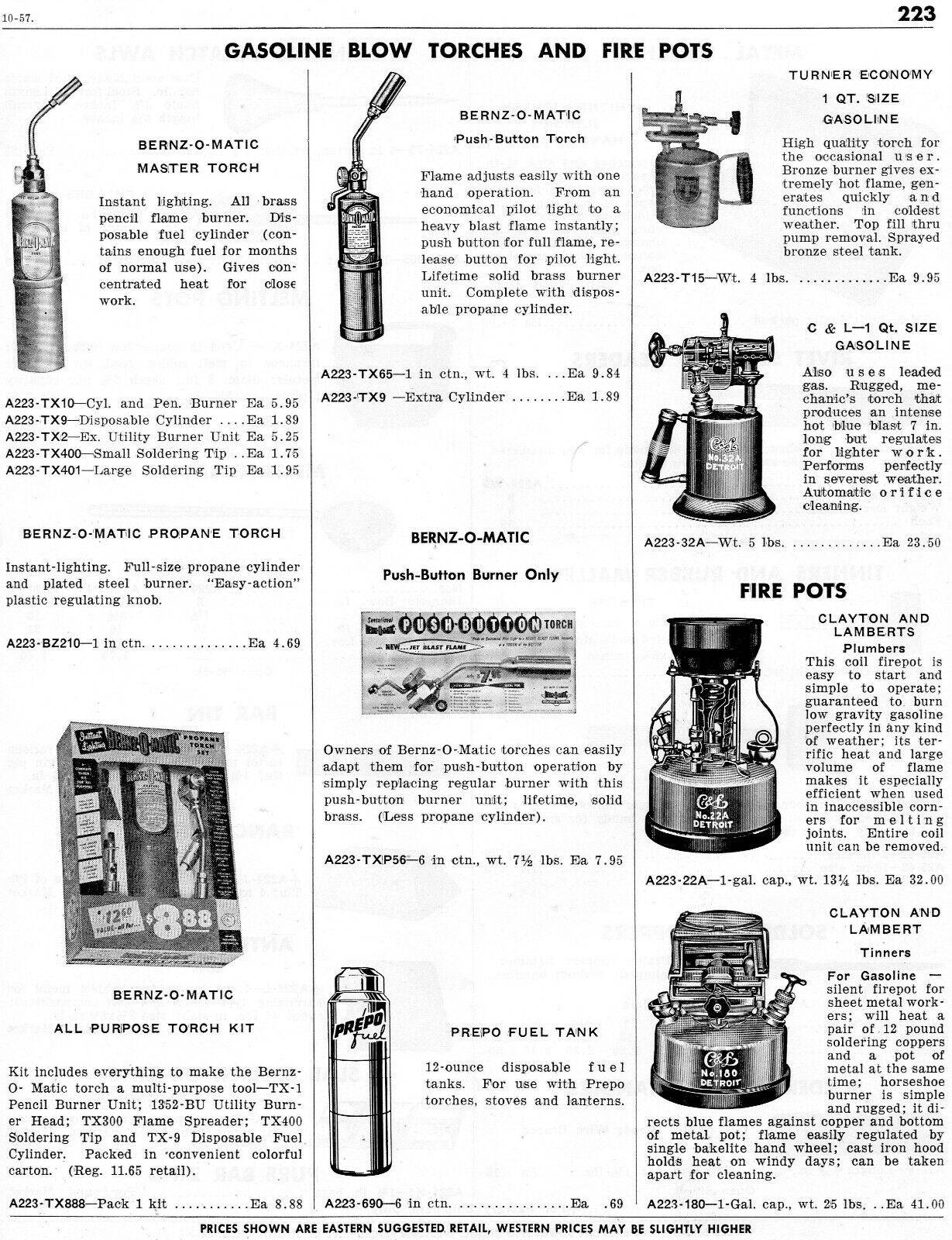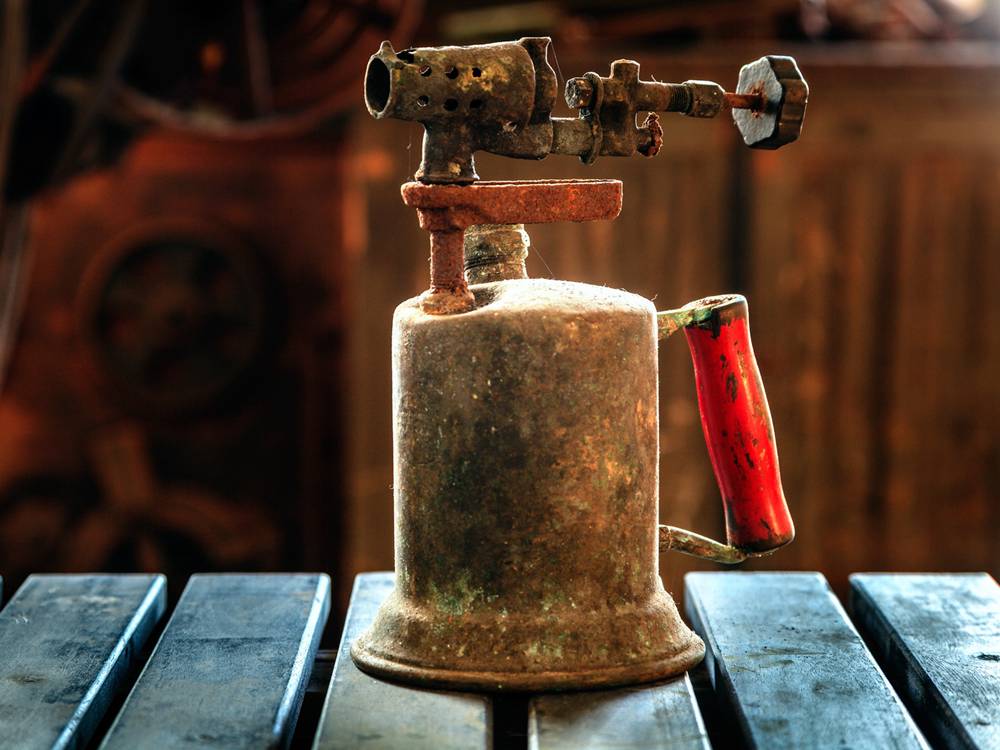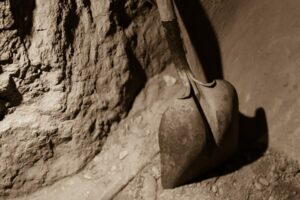Antique blowtorches have long fascinated collectors and enthusiasts alike for their historical significance and the role they played in the lives of tradespeople and everyday workers. Dating back to the Industrial Revolution, these liquid-fueled devices were once indispensable tools used by dentists, assayers, painters, plumbers, tinsmiths, and mechanics, among others. With a growing interest in these antique tools, it has become essential for collectors to have a reliable identification and value guide to help navigate the world of vintage blowtorches.
In this guide, we will explore the various types of antique blowtorches, their manufacturers, and the factors that contribute to their rarity and value. By studying the models, materials, and distinguishing features, collectors can gain a deeper understanding of the historical context and technical details that make each blowtorch unique. Additionally, this guide will aid collectors in making informed decisions when seeking to acquire or evaluate items for their collection, ensuring they invest in worthwhile and authentic pieces.
As we delve into the world of antique blowtorches, we will also discuss tips for proper care, restoration, and preservation of these historical artifacts. Maintaining the integrity and functionality of these devices can be a rewarding experience, allowing collectors to not only admire the beauty of these tools but also appreciate the practical applications for which they were originally designed. With a comprehensive identification and value guide at their disposal, collectors can confidently explore and appreciate the rich history and craftsmanship of antique blowtorches.
Table of Contents
History of Antique Blow Torches
Origins and Evolution
The first self-acting blowtorch is credited to a Frenchman, Théodore Pierre Bertin, who registered his invention in the late 18th century. These early blowtorches were often made with copper or bronze materials. They became increasingly popular during the Industrial Revolution, as they played a vital role in various industries such as metalwork, plumbing, and automotive repairs.
Over time, blowtorches evolved to include various styles and sizes, as well as advancements in fuel sources and safety features, with manufacturers constantly improving on the original designs. The antique blowtorches that remain today serve as a reminder of the innovation of that period, and their intricate designs and craftsmanship have become prized collectibles.
Key Manufacturers
In the US, several key manufacturers played significant roles in the production and development of antique blowtorches. Otto Bernz, a German immigrant, founded the Otto Bernz Company in the late 19th century. This company later became a prominent name in the field, producing a wide range of blowtorch models and paving the way for new innovations.
Another notable manufacturer, Turner Brass Works, was also active during this period. Recognized for producing high-quality blowtorches, the company contributed substantially to the industry’s expansion in the US.
Patents and Innovations
The antique blowtorch industry saw significant growth in the 19th and early 20th centuries. As a result, many innovations were patented during this time. Some key advancements included:
- Improved fuel storage and delivery systems, like gasoline canisters and safety valves
- Adjustable flame and flow settings for better control during use
- Enhanced materials, including thin brass or steel walls, to improve durability and efficiency
The Blow Torch Collectors Association (BTCA) has compiled a vast collection of blowtorch-related US patents, providing valuable historic insight and ensuring these innovations are preserved for future generations.
Types of Antique Blow Torches
Materials and Design

Antique blow torches were manufactured using a variety of materials to ensure durability and efficiency. Common materials used in their construction include:
- Tin: A lightweight and easily workable material, tin was often used for the body of the blow torch.
- Steel: A strong and durable material, steel was typically employed for constructing the internal parts of the torch.
- Nickel: This corrosion-resistant material was frequently used for plating the exterior of the torch to provide a layer of protection against rust and wear.
- Brass: Known for its malleability and resistance to corrosion, brass was a popular material for crafting torch parts like valves and fuel tanks.
The design of antique blow torches varied depending on the model, but they generally consisted of a fuel container, a pump to pressurize the fuel, a burner, and a nozzle.
Fuel Types
There were primarily two types of fuel used in antique blow torches:
- Kerosene: A widely accessible and affordable fuel source, kerosene was commonly used in antique blow torches. These blow torches often had a light-blue flame.
- Gasoline: Although more volatile than kerosene, gasoline provided a hotter flame, which made it suitable for certain applications like welding and soldering. Gasoline-fueled blow torches typically produced a yellowish flame.
Additionally, some companies manufactured blow torches that were capable of utilizing both fuel types, allowing users to choose the fuel best suited for their specific tasks.
Popular Models
Over the years, numerous blow torch models were produced by various manufacturers, each with their unique features and functionalities. Some popular antique blow torch models include:
- Firepots: A type of blow torch that featured a simple, open design and was typically fueled by kerosene. Firepots were commonly used for heating purposes, such as warming up engine block castings.

- Blow Lamps: These were smaller, handheld versions of antique blow torches that functioned similarly. They were often employed in craft-related tasks due to their portability and ease of use.
Collectors and enthusiasts of vintage blow torches find these distinctive models appealing for their historical significance and the quality of craftsmanship that went into their creation.
Identifying Techniques
Manufacturer’s Marks
When identifying antique blow torches, one of the primary techniques is to look for the manufacturer’s marks. These marks are usually found engraved or stamped on the torch, often on the base or near the handle. They can provide valuable information about the maker and age of the torch. Some common manufacturers include:
- Otto Bernz Company
- Clayton Lambert
- Max Sievert
- Turner Brass Works
To assist with identification, collectors can refer to an index of makers and their corresponding marks. Such an index can be found in reference books or online resources dedicated to the subject.
Visual Guides
Visual guides can be another helpful resource in identifying antique blow torches. These guides may include photos and illustrations of various models along with detailed descriptions to help collectors differentiate between similar torches. Some resources to consider:
- “Vintage Blowtorches” by Ronald Carr, Charles Smith, and Graham Stubbs (Blow Torch Collectors Association, 2007)
- Online resources, such as collector forums or auction sites, can provide real-life examples and expert advice
When using visual guides, take note of unique features, such as the shape of the handle or the design of the valve, as these can help narrow down the identification process.
Comparing Models
Once a collector has examined the manufacturer’s marks and referred to visual guides, it’s crucial to compare the torch in question with other models from the same maker. Doing so will help determine the torch’s specific model and possible value. Consider the following factors during comparison:
- Material: Brass, copper, or nickel plating are common materials found in antique blow torches
- Size: Blow torches come in various sizes, some designed for specific applications (e.g., dental work or jewelry)
- Design: Look for unique features, such as pressure gauges, safety valves, or ventilation holes
Comparing models can be facilitated by networking with other collectors, attending collectors’ conventions, or participating in online forums dedicated to antique blow torch collecting.
How to Tell if a Blow Torch is Antique or Old
Identifying an antique or old blow torch can be a bit challenging, especially for those who are new to collecting these items. However, there are several indicators that can help determine the age and authenticity of a blow torch.
First, pay attention to the materials used in the construction of the blow torch. Antique blow torches were generally made from brass, copper, and other metals, rather than the modern materials like plastic and aluminum used in more recent models. Brass and copper tend to develop a unique patina over time, which can also be an indicator of age.
Next, inspect the labeling and branding on the blow torch. Older models often have the manufacturer’s name or logo stamped or embossed on the body or handle, along with the patent number, model number, or other identifying information. Researching these markings can help you determine the age and origin of the blow torch.
Specific design features can also be helpful in dating a blow torch, such as:
- Early models might have wooden handles, while later models have metal handles.
- Antique blow torches generally have a pump-style fuel system, whereas more modern blow torches use pressurized fuel canisters.
- The type of fuel it uses can also be an indicator; older models tend to run on gasoline, kerosene, or alcohol, while modern versions are more likely to use propane or butane.
Finally, consulting resources such as vintageblowtorches.com, forums dedicated to blow torch collectors, and antique reference books can offer valuable information for identifying and dating antique blow torches. Remember, however, that it can sometimes be difficult to pinpoint an exact age, so focusing on the overall style and design of the blow torch when making an assessment is essential.
6 Factors to Identify & Value Antique Blow Torch
1. Age
One significant factor that impacts the value of antique blow torches is their age. Though older blowtorches may seem inherently more valuable, it’s important to note that rarity plays a more significant role in determining the value of a blowtorch. As a result, some older models might not be as valuable due to being more common in the market.
When examining an antique blowtorch, it’s helpful to know the date of manufacture as this information can help collectors and appraisers determine its age. Unfortunately, specific dating can be difficult as some manufacturers did not stamp the production date on their blowtorches. However, you can still make an educated guess on the age by looking at the design and materials used in the manufacturing of the blowtorch.
Below is a table outlining the average valuation of antique blowtorches based on their age:
| Age (Years) | Average Valuation |
|---|---|
| 50-75 | $100 – $150 |
| 75-100 | $150 – $200 |
| 100-125 | $200 – $300 |
| 125+ | $300 – $400 |
As evident in the table, older blowtorches generally have higher valuations, with those over 125 years old being the most valuable. However, this value is only a rough estimate and doesn’t factor in the rarity, condition, and other elements that might affect the pricing.
2. Brand
When it comes to collecting antique blow torches, the brand plays a significant role in the identification and valuation process. Certain brands are associated with higher quality or rarity, often resulting in a higher value for collectors.
Some of the major torch manufacturers in the United States not only produced a wide variety of torches under their own name, but also manufactured torches for other companies or distributors. These are commonly referred to as “brand labeled” torches.
When determining the value of an antique blow torch, it is important to consider factors such as the brand’s reputation, the rarity of the specific torch model, and the overall condition of the item.
For example, a blow torch from a well-known and respected brand will likely carry a higher value than one from an obscure or lesser-known brand. At the same time, a rare model from a less-popular brand might be more valuable than a similar model from a popular brand if it is difficult to find in good condition.
Additionally, collectors will pay attention to factors such as the materials used in the torch’s construction, unique features or design elements, and any historical significance the torch may have.
Keep in mind that these factors can significantly impact the value of an antique blow torch, making the brand an important consideration for collectors when researching and appraising these items.
3. Materials
Antique blowtorches were made from various materials that can affect their value and identification. Some of the most common materials used in the manufacturing of these blowtorches include brass, copper, and steel. Collectors and enthusiasts take into account the material and the condition of the blowtorch while determining its value and rarity.
Brass and copper blowtorches are often more valuable due to their shiny and attractive appearance, as well as their resistance to rust and corrosion. Steel blowtorches, on the other hand, are more prone to rust and may not command as high of a price, but they have a sturdy and robust nature that appeals to some collectors.
The table below provides a general estimation of the average valuation for antique blowtorches according to the material they are made of:
| Material | Average Valuation |
|---|---|
| Brass Blowtorch | $100 – $150 |
| Copper Blowtorch | $120 – $180 |
| Steel Blowtorch | $50 – $100 |
Please note that these average valuations are just a rough guideline and can vary greatly depending on other factors, such as the blowtorch’s condition, age, rarity, and manufacturer.
In addition to the material, the design and functionality of the antique blowtorch can also affect its value. Collectors appreciate well-designed blowtorches with unique features or mechanisms, as they reflect the craftsmanship and innovation of the time. Therefore, a blowtorch that showcases a rare or unusual design is likely to be more valuable than a standard or generic model.
In conclusion, the material of an antique blowtorch is an essential factor in determining its value and identification. Brass and copper blowtorches tend to command higher prices than steel ones, but other factors such as condition, age, rarity, and design can also influence the value of these antique pieces.
4. Styles
Antique blow torches come in various styles which hold differing values. Factors such as the manufacturer, design, and functionality play a significant role in determining the worth of a torch. For collectors and enthusiasts, understanding these styles can make for easier identification and appraisal.
Four common styles of antique blow torches are:
- Hand pump gasoline torches
- Automatic gasoline torches
- Alcohol torches
- Kerosene torches
Each torch style uses a different fuel and mechanism to produce the flame, affecting their value differently. To assist in the appraisal process, we have compiled a valuation table for the different styles of antique blow torches:
| Torch Style | Average Valuation |
|---|---|
| Hand Pump Gasoline Torch | $100 – $150 |
| Automatic Gasoline Torch | $75 – $125 |
| Alcohol Torch | $150 – $200 |
| Kerosene Torch | $50 – $100 |
Keep in mind that these values are approximate and may vary depending on the specific model, its rarity, and overall condition. Variations within each style — such as design features, brand labels, and historical significance — can further impact the value of an antique blow torch.
For instance, the hand pump gasoline torch is typically considered more desirable by collectors due to its intricate design and mechanical complexity. In contrast, kerosene torches usually hold less value due to their more straightforward functional mechanisms and wider availability.
Collecting antique blow torches provides a fascinating glimpse into the past, showcasing the ingenuity and craftsmanship of an era gone by. As with any collectible field, understanding the different styles and the values they carry is essential for accurate identification and appraisal.
5. Patina
Patina is a factor that plays a crucial role in the value and identification of antique blow torches. Collectors and enthusiasts often appreciate the natural patina on the torches, which refers to the change in appearance due to age, wear, and exposure to air. In some cases, the presence of a beautiful patina can significantly increase the value of the blow torch.
However, the extent to which patina affects the value of an antique blow torch can vary. Factors like the overall condition, rarity, and age of the piece also influence the valuation. The following table showcases the average valuation of antique blow torches based on their degree of patina:
| Patina Condition | Average Valuation |
|---|---|
| No visible patina | $10 – 30 |
| Light patina | $30 – 50 |
| Moderate patina | $50 – 70 |
| Heavy patina | $70 – 100 |
| Exceptional patina | $100 – 150 |
It’s essential to note that while some collectors prefer antique blow torches to have a natural patina, others search for pieces that are polished, painted, or otherwise restored to a more pristine condition. As such, the preferences of the potential buyer can also impact the valuation of a torch with patina significantly.
Additionally, many antique blow torches have markings and labels that add to their history and identification. A well-preserved patina can enhance the visibility of these markings, making the piece more desirable among collectors and potentially raising its value.
In conclusion, the presence and degree of patina on an antique blow torch can contribute to its overall value and appeal in the collectors’ market. However, it’s important to consider other factors like the individual piece’s condition, rarity, and age, as well as the preferences of potential buyers when determining the true value of a torch with patina.
6. Completeness
When assessing the value of an antique blow torch, one of the key factors to consider is its completeness. A complete blow torch will typically have all of its original parts, be in good working condition, and have minimal to no damage. The following paragraphs will discuss how the level of completeness impacts value and provide a valuation table highlighting the average value based on a torch’s completeness.
A complete antique blow torch will not only have the flared base, thin brass or steel walls, and pumps for the gas but also the gas canisters, fillers, and safety valves. These torches often allow you to adjust the flame and flow and generally cost around $10 – $80. Antique gasoline blow torches with all of the aforementioned parts intact and in good condition would be considered highly complete and, therefore, would fetch the highest value.
In contrast, a blow torch missing essential components or having some damage may be considered partially complete. Depending on the severity of missing components or damage, the value of a partially complete antique blow torch may be significantly reduced. Buyers and collectors would generally prefer a complete antique torch, especially if the intention is to use the torch for practical purposes or display it in a collection.
Final Thoughts
Antique blow torches hold a special place in history, as they were widely used during the industrial revolution across various professions. Collectors and enthusiasts alike can appreciate the beauty and functionality of these vintage tools, as well as the craftsmanship involved in their production.
When identifying antique blow torches, it’s crucial to take note of essential features such as flared bases, thin brass or steel walls, and gas pumps. These elements not only contribute to the overall appearance of the torch but also determine its value. Generally, gasoline blow torches can be found in the price range of $10 to $80.
Enthusiasts have access to numerous resources for locating and identifying antique blow torches. Websites like VintageBlowtorches.com and the Blowtorch Association provide valuable information on the history of these tools, as well as helpful tips and guides for collectors. Moreover, online marketplaces such as eBay offer a diverse range of antique blow torches for potential buyers, with prices typically averaging $25 to $50.
In summary, antique blow torches are fascinating reminders of a bygone era, and their unique features make them interesting and valuable items for collectors. By recognizing important characteristics and utilizing available resources, enthusiasts can continue to explore, appreciate, and preserve these historic tools for generations to come.
FAQ
What are the common types of antique blow torches?
There are several types of antique blow torches, including gasoline, kerosene, and alcohol-based torches. These torches were often made with materials such as brass or steel and came with gas canisters, fillers, and safety valves.
How can I identify an antique blow torch?
To identify an antique blow torch, look for specific features such as:
- Flared bases
- Thin brass or steel walls
- Pumps for the gas
- Adjustable flame and flow mechanisms
Additionally, you can consult resources such as the Blow Torch Collectors Association (BTCA), which offers information on torch identification.
What is the typical value of an antique blow torch?
The value of an antique blow torch can vary depending on factors such as rarity, condition, and materials used. Generally, antique gasoline blow torches cost between $10 and $80. However, prices can be higher for rarer or more unique torches. For an accurate valuation, it is recommended to consult an antique expert or specialized collector’s guide.
Where can I buy or sell an antique blow torch?
You can buy or sell antique blow torches through various platforms such as online marketplaces like eBay, antique shops, or collector’s fairs. When buying or selling, ensure that you have adequate knowledge about the torch’s value and authenticity to avoid scams or overpaying.
How can I clean and maintain an antique blow torch?
To clean and maintain an antique blow torch, follow these general tips:
- Use a soft cloth or brush to gently clean the surface
- Apply a suitable metal polish to restore shine (be cautious while using abrasive materials)
- Store the torch in a dry and protected environment to prevent corrosion or damage
Always handle the torch with care, and consult expert advice if unsure about the cleaning process.









